2024
 |
Gretchen Domek: Gretchen graduated in 2003 with a BS in Chemistry with Honors. After leaving the U,
Gretchen earned an M. Phil. Degree in Medical Anthropology at Oxford University as
a Rhodes Scholar. She then attended Medical School, earning an MD from Harvard in
2009. She is on the University of Colorado Denver - Anschutz Medical Campus faculty,
where she serves as Director of the International Adoption Clinic and Senior Investigator
at the Center for Global Health; she is also a practicing physician in pediatrics
at Children’s Hospital Colorado.
|
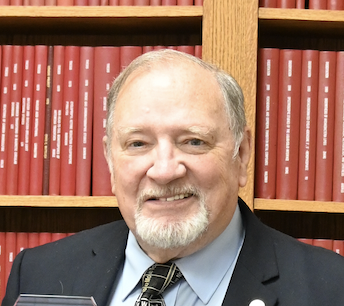 |
Alan D. Eastman: Alan, a 1971 graduate with a BS in Chemistry and 1975 with a Ph.D. in. chemistry
with Professor Robert Parry, has had a remarkable journey. He retired from a productive
30-year career at Phillips Petroleum and ConocoPhillips. Then, he co-founded GreenFire
Energy, a geothermal energy company working on projects in the US and multiple foreign
countries. Alan is an inventor and author of 39 US and numerous foreign patents, with
several others pending.
|
 |
Paul R. Weider: Paul graduated from the U in 1978 with a BS in Chemistry. He then earned an MS in
organic chemistry from Ohio State and a Ph.D. in organometallic chemistry from Colorado
State University. Paul had a successful career at Shell International Exploration
and Production for more than 35 years as a process development scientist, co-authoring
67 patents. Paul has taken new and novel chemical processes from inception through
development to construction and start-up of world-scale production facilities. He
is a co-recipient of an R&D 100 Award and an ACS Team Innovation Award.
|
2023
 |
Zlatko Bačić, is a professor of chemistry at the Department of Chemistry, NYU. Zlatko Bačić received
his B.S. from the University of Zagreb and his Ph.D. from the University of Utah Department
of Chemistry with Professor Jack Simons. Professor Bačić work includes research of
theoretical and computational chemistry, quantum treatment of the dynamics and spectroscopy
of molecules in nanoporous materials and on solid surfaces, vibrational spectra of
fluxional molecular systems of biological interest, and weakly bound molecular clusters.
He is also the founding director of the new Simons Center for Computational Physical
Chemistry at NYU established in 2021.
|
 |
Amy Barrios, is a medicinal chemist working as a professor of Medicinal Chemistry and the Associate
Dean for Postdoctoral Affairs at the University of Utah. On August 16, 2019, the Graduate
School appointed Professor Amy Barrios, Department of Medicinal Chemistry (College
of Pharmacy), the new Associate Dean of Postdoctoral Affairs in the Graduate School. Amy
M. Barrios graduated from the University of Utah with a bachelor’s in chemistry in
1995, followed by a Ph.D. in 2000 from MIT and a postdoc from the Department of Pharmaceutical
Chemistry, University of California, San Francisco.
|
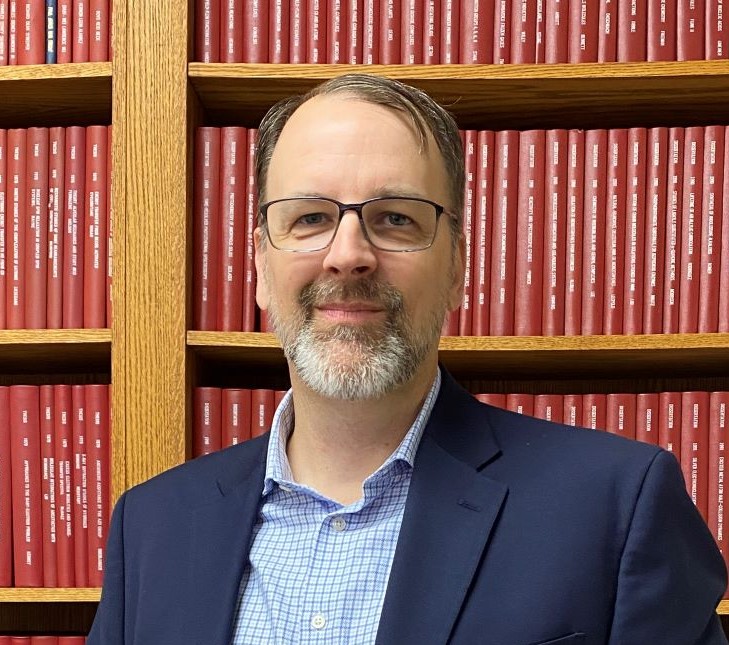 |
Mitchell Johnson, is the Executive Vice President at General Plastics Manufacturing Company responsible
for developing the company’s strategic growth platforms, focusing on developing new
products and new applications of its current products. Johnson earned his doctorate
from the University of Utah Department of Chemistry with Professor Joel Miller. He
pursued post-doctoral studies at Los Alamos National Laboratory, studying organometallic
and lanthanide chemistry.
|
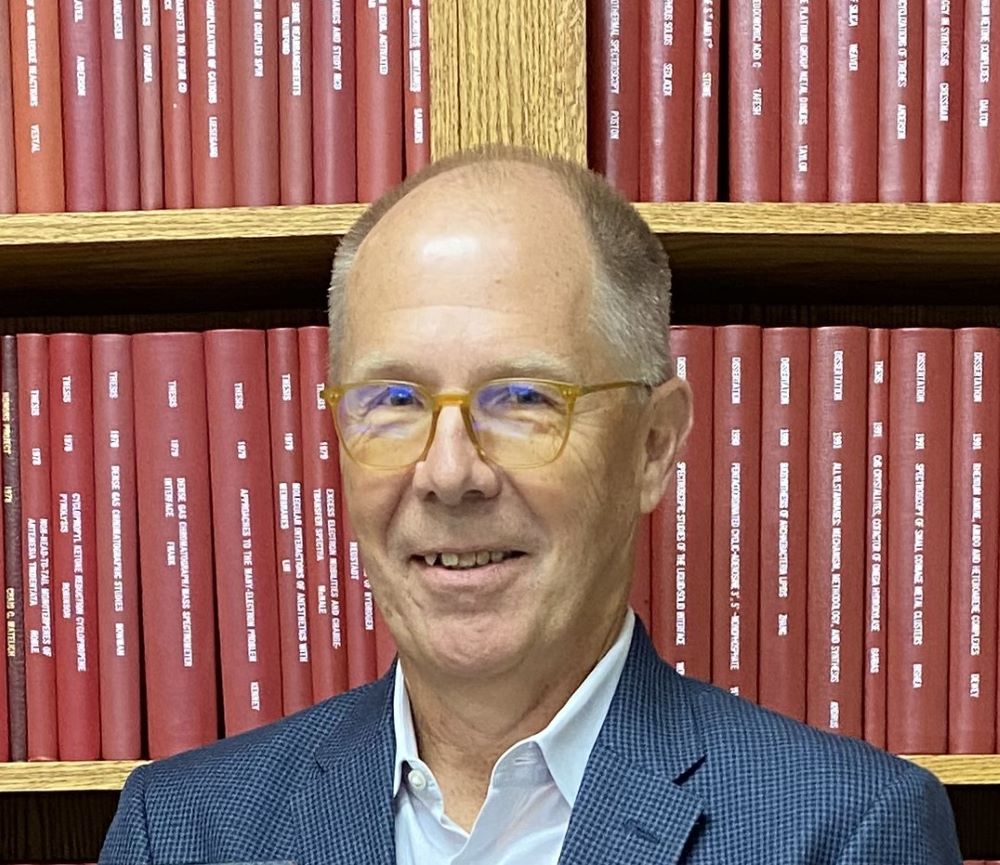 |
Roger Leach, retired from DuPont two years ago after a very successful 36-year career starting
at the Experimental Station in Wilmington, DE. Roger was the Technical Senior Manager
and Leader of the Science & Innovation Core Analytical Sciences organization. After
relocating to the San Diego area, Roger joined Viridos, as their Director of Analytical
Sciences, which is developing genomically engineered, industry-leading algal strains
as lipid feedstock for second-generation renewable diesel and aviation biofuels. Leach
received his Ph.D. 1984 from the University of Utah Department of Chemistry with Professor
Joel Harris.
|
| |
Read more here about our 2023 Distingushed Alumni accomplishments.
|
2020
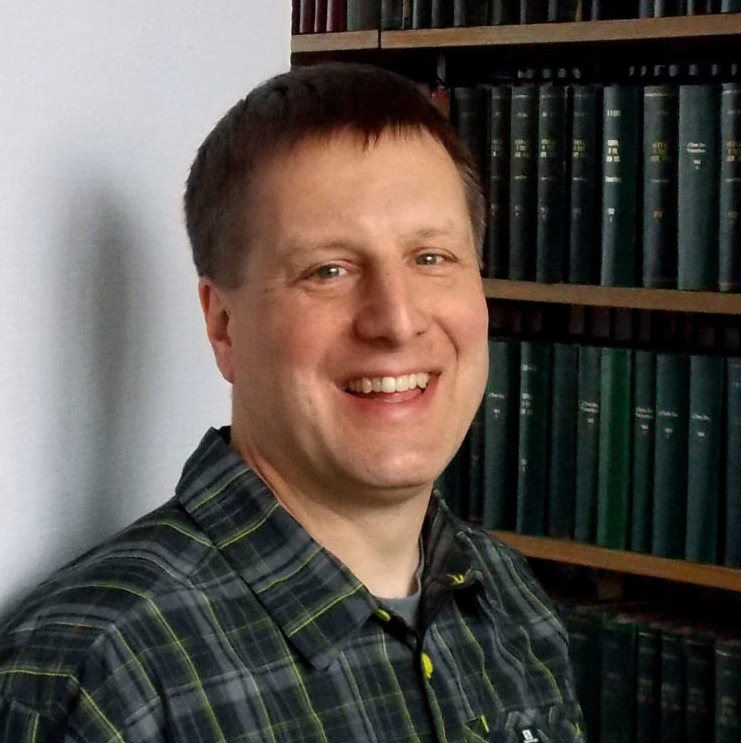 Rik R. Tykwinski earned his PhD from the University of Utah with Peter Stang in 1994. He worked with
Professor François Diederich as a PDF at ETH-Zürich and then joined the faculty at
the University of Alberta in 1997. In 2009 he accepted a position as Chair of Organic
Chemistry at the University of Erlangen-Nürnberg in Germany. In 2016 he became Chair
of the Department of Chemistry at the University of Alberta. His studies focus on structure-property relationships in conjugated molecules.
Rik R. Tykwinski earned his PhD from the University of Utah with Peter Stang in 1994. He worked with
Professor François Diederich as a PDF at ETH-Zürich and then joined the faculty at
the University of Alberta in 1997. In 2009 he accepted a position as Chair of Organic
Chemistry at the University of Erlangen-Nürnberg in Germany. In 2016 he became Chair
of the Department of Chemistry at the University of Alberta. His studies focus on structure-property relationships in conjugated molecules.
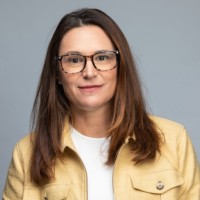 Carrie Wager is Vice President Strategic and Scientific Operations at Ascidian Therapeutics. She
received her Bachelor's in Chemistry in 1994 from Miami University, her PhD in Chemistry
from the University of Utah in 2000 and an MBA from the MIT Sloan School of Management
in 2017. Carrie spent 17 years at Pfizer as Senior Principal Scientist, Director
of Business Planning, Chief of Staff for Pfizer Medical, and Medical Strategy Lead
in Oncology. She then joined the Broad Institute of MIT and Harvard as Senior Advisor,
before assuming her present position at Ascidian Therapeutics.
Carrie Wager is Vice President Strategic and Scientific Operations at Ascidian Therapeutics. She
received her Bachelor's in Chemistry in 1994 from Miami University, her PhD in Chemistry
from the University of Utah in 2000 and an MBA from the MIT Sloan School of Management
in 2017. Carrie spent 17 years at Pfizer as Senior Principal Scientist, Director
of Business Planning, Chief of Staff for Pfizer Medical, and Medical Strategy Lead
in Oncology. She then joined the Broad Institute of MIT and Harvard as Senior Advisor,
before assuming her present position at Ascidian Therapeutics.
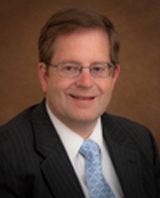 Raymond Price received his B.S. in Chemistry from the University of Utah, followed by an M.D. from
Harvard. He has spent his career expanding the role of surgery in public health, and
has participated in or led surgical expeditions to Asia, Latin America, and Africa.
He co-founded The Center for Global Surgery at the University of Utah. He also currently
directs graduate surgical education at Intermountain Medical Center.
Raymond Price received his B.S. in Chemistry from the University of Utah, followed by an M.D. from
Harvard. He has spent his career expanding the role of surgery in public health, and
has participated in or led surgical expeditions to Asia, Latin America, and Africa.
He co-founded The Center for Global Surgery at the University of Utah. He also currently
directs graduate surgical education at Intermountain Medical Center.
He has served with the World Health Organization, and has written numerous peer-reviewed
articles and books or chapters in books.
2019
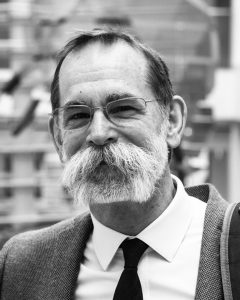 Kurt Zilm completed his PhD in Chemistry at the University of Utah in 1981. Now Chair of the
Department of Chemistry at Yale, Zilm's research involves development of new NMR methods
and their application to important problems in chemistry and materials science. Recent
interests include the use of site specific sold state NMR relaxation measurements
to characterize protein backbone motions and to measure difficult to access long range
distance constraints. They are also studying the dynamics of water in proteins and
other materials where nanoscopic confinement effects depress the freezing point by
over 60 K.
Kurt Zilm completed his PhD in Chemistry at the University of Utah in 1981. Now Chair of the
Department of Chemistry at Yale, Zilm's research involves development of new NMR methods
and their application to important problems in chemistry and materials science. Recent
interests include the use of site specific sold state NMR relaxation measurements
to characterize protein backbone motions and to measure difficult to access long range
distance constraints. They are also studying the dynamics of water in proteins and
other materials where nanoscopic confinement effects depress the freezing point by
over 60 K.
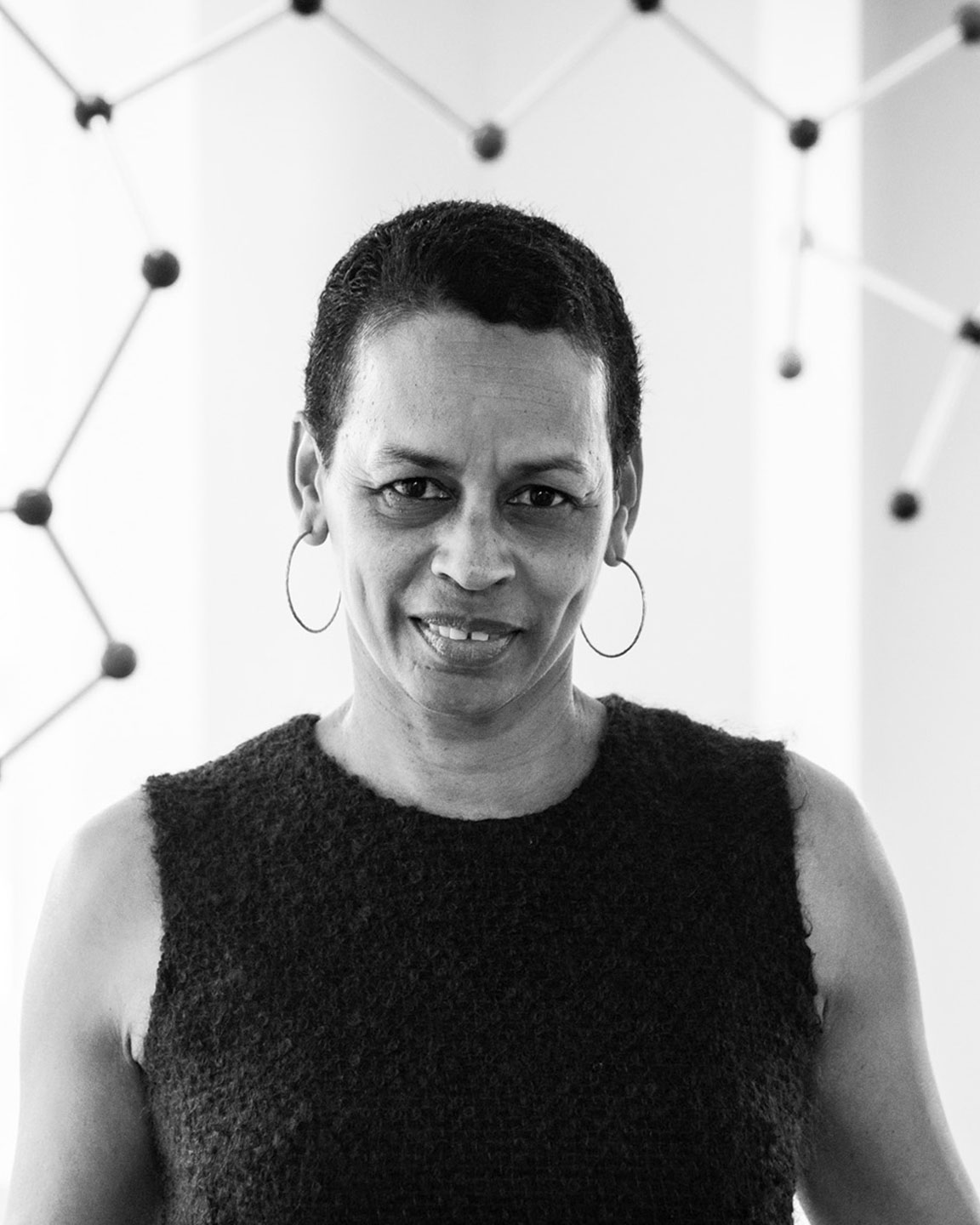 Michelle Williams received her PhD from the University of Utah and began her career with Rohm and Haas
Company as a Research Scientist in 1987. During her career with Rohm and Haas Company
and Dow Chemical, Michelle also held manufacturing, sales, marketing, strategy, and
general management positions. She was General Manager with CMP Technologies, and
later General Manager with Adhesives and Sealants. Michelle joined Arkema in 2011,
and was named Global Group President of Arkema's Hydrogen Peroxide business unit.
Michelle joined the Brady Corporation's Board of Directors, a global leader in safety
and identification solutions.
Michelle Williams received her PhD from the University of Utah and began her career with Rohm and Haas
Company as a Research Scientist in 1987. During her career with Rohm and Haas Company
and Dow Chemical, Michelle also held manufacturing, sales, marketing, strategy, and
general management positions. She was General Manager with CMP Technologies, and
later General Manager with Adhesives and Sealants. Michelle joined Arkema in 2011,
and was named Global Group President of Arkema's Hydrogen Peroxide business unit.
Michelle joined the Brady Corporation's Board of Directors, a global leader in safety
and identification solutions.
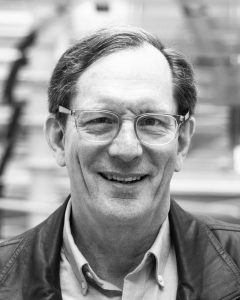
Bill Jack went on to receive his PhD at Duke University after completing his BA in Chemistry
at the University of Utah in 1977. He is now Senior Scientist at New England Biolabs
whih is a recognized world leader in scientific innovation and environmental sustainability,
and has been awarded as one of the most admired workplaces in the region. Bill's lab
focuses on DNA polymerases, more particularly on the ability to incoroporate modified
nucleotides, including chain terminators. This focus is expanding to include polymerase
activity on modified DNA templates, for example, those of modified phage genomes.
2018
 Joseph Madsen received his undergraduate degree from the University of Utah in 1976, from which
he went on to earn an MD from Harvard Medical School in 1981. Between the years 1981
and 1983, he completed an internship followed by a research fellowship with Beth Israel
Deaconess Medical Center in Boston, then completed his residency in 1989 with Massachusetts
General Hospital. He has certifications with the American Board of Neurological Surgery
and the American Board of Psychiatry and Neurology in Child Neurology. He has developed
new techniques for monitoring shunt flow in patients with hydrocephalus, as well as
predicting seizures using intracranial data gathered from implanted electrodes. Aside
from practicing pediatric neurosurgery at Boston Children’s Hospital, Madsen is an
adjunct professor in functional neurosurgery at Xanwu Hospital, associated with Capitol
Medical University, Beijing Institute of Functional Neurosurgery. He hopes to improve
pediatric neurosurgery and epilepsy surgery abroad, especially in China, and has been
working on a mechanism to review surgical cases in real time with colleagues at Beijing’s
Children’s Hospital.
Joseph Madsen received his undergraduate degree from the University of Utah in 1976, from which
he went on to earn an MD from Harvard Medical School in 1981. Between the years 1981
and 1983, he completed an internship followed by a research fellowship with Beth Israel
Deaconess Medical Center in Boston, then completed his residency in 1989 with Massachusetts
General Hospital. He has certifications with the American Board of Neurological Surgery
and the American Board of Psychiatry and Neurology in Child Neurology. He has developed
new techniques for monitoring shunt flow in patients with hydrocephalus, as well as
predicting seizures using intracranial data gathered from implanted electrodes. Aside
from practicing pediatric neurosurgery at Boston Children’s Hospital, Madsen is an
adjunct professor in functional neurosurgery at Xanwu Hospital, associated with Capitol
Medical University, Beijing Institute of Functional Neurosurgery. He hopes to improve
pediatric neurosurgery and epilepsy surgery abroad, especially in China, and has been
working on a mechanism to review surgical cases in real time with colleagues at Beijing’s
Children’s Hospital.
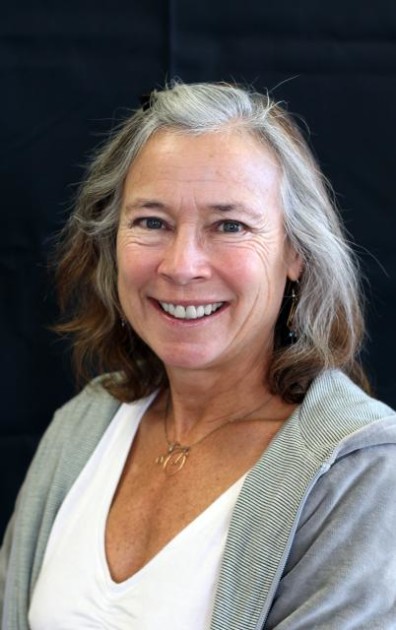 Jeanne McHale earned a BS in Chemistry from Wright State University in 1975, Jeanne McHale attended
the University of Utah for her PhD, which she received in 1979 with Jack Simons, followed
by postdoctoral research with Jim Wang. Jeanne was a member of the chemistry faculty
at the University of Idaho from 1980 until 2004, which is when she joined the chemistry
faculty at Washington State University, where she is currently a Professor Emerita.
She is a fellow in the American Association for the Advancement of Science and author
of Molecular Spectroscopy (Prentice-Hall, 1999). She also edited the recently published
Handbook of Luminescent Semiconductor Materials (Taylor & Francis, 2011) with co-editor
Leah Bergman. The McHale lab specializes in the use of resonance Raman and photoluminescence
spectroscopy for study of molecules and nanomaterials with interesting optical and
electronic properties. Fundamental quantum mechanical aspects of electron transfer
in solution and in interfacial systems are a major focus of their experiments. McHale’s
group pioneered the use of resonance Raman spectroscopy to study solvent dynamics
in electron-transfer reactions. (Photo courtesy of WSU.)
Jeanne McHale earned a BS in Chemistry from Wright State University in 1975, Jeanne McHale attended
the University of Utah for her PhD, which she received in 1979 with Jack Simons, followed
by postdoctoral research with Jim Wang. Jeanne was a member of the chemistry faculty
at the University of Idaho from 1980 until 2004, which is when she joined the chemistry
faculty at Washington State University, where she is currently a Professor Emerita.
She is a fellow in the American Association for the Advancement of Science and author
of Molecular Spectroscopy (Prentice-Hall, 1999). She also edited the recently published
Handbook of Luminescent Semiconductor Materials (Taylor & Francis, 2011) with co-editor
Leah Bergman. The McHale lab specializes in the use of resonance Raman and photoluminescence
spectroscopy for study of molecules and nanomaterials with interesting optical and
electronic properties. Fundamental quantum mechanical aspects of electron transfer
in solution and in interfacial systems are a major focus of their experiments. McHale’s
group pioneered the use of resonance Raman spectroscopy to study solvent dynamics
in electron-transfer reactions. (Photo courtesy of WSU.)
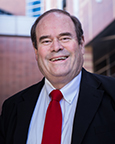 Craig Thatcher earned a BA in Chemistry from the University of Utah in 1974, a natural course for
him since his grandfather was a chemistry teacher and founder of Wasatch Chemical
Company, and his father a chemical engineer and founder of Thatcher Chemical Company.
After receiving his undergraduate degree, Thatcher attended graduate school at Northwestern
University in Evanston, Illinois where he earned an MBA in Marketing in 1976. He and
his wife Connie spent their first year of marriage in Centerville, Utah where he began
his full-time career at Thatcher Chemical Company, a company for which he still dedicates
his time and energy as president. The Thatcher Chemical Company has grown from humble
beginnings with two employees and no facilities, to a company of over 500 employees
in 11 U.S. locations with customers throughout the world. The company is currently
debt-free and has experienced rapid growth in recent years. Craig Thatcher is always
looking to improve himself and assist in helping others, and is actively involved
in community service and charity work, as well as endeavors to build the Thatcher
Chemical Company in an effort to achieve these goals.
Craig Thatcher earned a BA in Chemistry from the University of Utah in 1974, a natural course for
him since his grandfather was a chemistry teacher and founder of Wasatch Chemical
Company, and his father a chemical engineer and founder of Thatcher Chemical Company.
After receiving his undergraduate degree, Thatcher attended graduate school at Northwestern
University in Evanston, Illinois where he earned an MBA in Marketing in 1976. He and
his wife Connie spent their first year of marriage in Centerville, Utah where he began
his full-time career at Thatcher Chemical Company, a company for which he still dedicates
his time and energy as president. The Thatcher Chemical Company has grown from humble
beginnings with two employees and no facilities, to a company of over 500 employees
in 11 U.S. locations with customers throughout the world. The company is currently
debt-free and has experienced rapid growth in recent years. Craig Thatcher is always
looking to improve himself and assist in helping others, and is actively involved
in community service and charity work, as well as endeavors to build the Thatcher
Chemical Company in an effort to achieve these goals.
2017
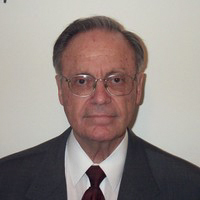 Carlos M. Bowman received his PhD in Organic Chemistry from the University of Utah in 1957. While working
in rocket fuel research early on in his career at the Dow Chemical Company, Bowman
implemented the innovative use of computers in using thermodynamics to predict substance
thrust capabilities for use in rocket propellants. In 1967 he became the Dow Chemical
Company’s Research Director, where he continued to advance the field of cheminformatics
until 1980.
Carlos M. Bowman received his PhD in Organic Chemistry from the University of Utah in 1957. While working
in rocket fuel research early on in his career at the Dow Chemical Company, Bowman
implemented the innovative use of computers in using thermodynamics to predict substance
thrust capabilities for use in rocket propellants. In 1967 he became the Dow Chemical
Company’s Research Director, where he continued to advance the field of cheminformatics
until 1980.
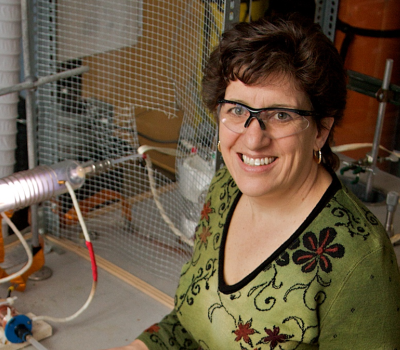
Ellen R. Fisher earned her PhD in Physical Chemistry from the University of Utah in 1991, after which
she joined Colorado State University as a Professor of Chemistry. From 2009 to 2014
she served as Department Chair for CSU’s Department of Chemistry, and in 2014 she
became Senior Faculty Advisor to the Vice President for Research. Her research focuses
on using analytical and materials chemistry methods to better understand the underlying
mechanisms of the processes of chemical vapor deposition and plasma-enhanced chemical
vapor deposition. (Photo courtesy of Fisher Group People.)
 Bryant W. Rossiter earned his PhD from the University of Utah in 1957 and currently works as a consultant,
author, and as the senior editor of Physical Methods of Chemistry. From 1957-1985
he was the Director of the Chemistry Division at Eastman Kodak Co., and from 1985-1989
served as President of Viratek Pharmaceuticals, Inc. His ventures resulted in several
successful attempts at developing broad-spectrum antiviral drugs, some of these treatments
experiencing worldwide implementation.
Bryant W. Rossiter earned his PhD from the University of Utah in 1957 and currently works as a consultant,
author, and as the senior editor of Physical Methods of Chemistry. From 1957-1985
he was the Director of the Chemistry Division at Eastman Kodak Co., and from 1985-1989
served as President of Viratek Pharmaceuticals, Inc. His ventures resulted in several
successful attempts at developing broad-spectrum antiviral drugs, some of these treatments
experiencing worldwide implementation.
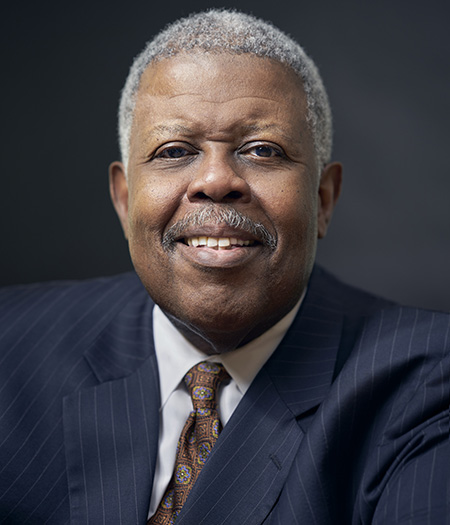 Clifton G. Sanders received his PhD from the University of Utah in 1990 and went on to hold many positions
in both research and education, including Research Scientist for CardioPulmonics,
Dean for the School of Science, Mathematics and Engineering for Salt Lake Community
College, and Adjunct Instructor for the Salt Lake Theological Seminary. He is currently
the Chief Technology Consultant and Co-Owner of Better Options Consulting International,
and is the Provost for Academic Affairs at Salt Lake Community College.
Clifton G. Sanders received his PhD from the University of Utah in 1990 and went on to hold many positions
in both research and education, including Research Scientist for CardioPulmonics,
Dean for the School of Science, Mathematics and Engineering for Salt Lake Community
College, and Adjunct Instructor for the Salt Lake Theological Seminary. He is currently
the Chief Technology Consultant and Co-Owner of Better Options Consulting International,
and is the Provost for Academic Affairs at Salt Lake Community College.

Honorary Distinguished Alumnus Edward M. Eyring received his PhD in Physical Chemistry in 1960 and proceeded to become an NSF Postdoctoral
Fellow with the University of Goettingen. He would then spend the next 50 years of
his life as a dedicated faculty member of the University of Utah Department of Chemistry,
where he contributed most recently to nanoparticle and Chemical Looping Combustion
research. He is the recipient of several awards, including the NATO Senior Fellowship
in 1977, the Willard Gardner Prize of the Utah Academy of Sciences, Arts and Letters
in 1993, and the Utah Governor’s Medal for Science and Technology in 2011. He retired
in 2016, after which the Edward M. Eyring Undergraduate Scholarship was established
in his honor and in gratitude for his many years of service and contributions to chemistry.
2016
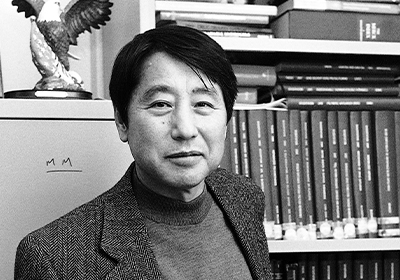 Sung Wan Kim received his PhD in Physical Chemistry with Professor Henry Eyring in 1969. He is
currently a Distinguished Professor of Pharmaceutics and Pharmaceutical Chemistry
and a Distinguished Professor of Bioengineering at the U. He was Director of the Center
for Controlled Chemical Delivery from 1985-2006. Dr. Kim is a pioneer in drug delivery
research focused on hydrogels, biodegradable drug conjugates, self-regulating drug
delivery and stimuli sensitive polymers.
Sung Wan Kim received his PhD in Physical Chemistry with Professor Henry Eyring in 1969. He is
currently a Distinguished Professor of Pharmaceutics and Pharmaceutical Chemistry
and a Distinguished Professor of Bioengineering at the U. He was Director of the Center
for Controlled Chemical Delivery from 1985-2006. Dr. Kim is a pioneer in drug delivery
research focused on hydrogels, biodegradable drug conjugates, self-regulating drug
delivery and stimuli sensitive polymers.
 Jaqueline L. Kiplinger obtained her PhD in Organometallic Fluorocarbon Chemistry at the University of Utah
with Professor Tom Richmond in 1996. She is now a Fellow at Los Alamos National Laboratory,
where she has worked since starting as a postdoctoral fellow in 1999. She is recognized
as a pioneer in uranium and thorium chemistry, and has received numerous awards for
her research, service, and mentorship.
Jaqueline L. Kiplinger obtained her PhD in Organometallic Fluorocarbon Chemistry at the University of Utah
with Professor Tom Richmond in 1996. She is now a Fellow at Los Alamos National Laboratory,
where she has worked since starting as a postdoctoral fellow in 1999. She is recognized
as a pioneer in uranium and thorium chemistry, and has received numerous awards for
her research, service, and mentorship.
 Milton L. Lee received his B.A. in Chemistry from the University of Utah in 1971. He attended graduate
school at Indiana University, earning his PhD with Professor Milos Novotny in 1975.
In 1976, he joined the faculty at BYU, where he is now the H. Tracy Hall Professor
of Chemistry. He specializes in microseparation techniques, column technology for
microseparations, and instrumentation for capillary separations and high performance
separations-mass spectrometry.
Milton L. Lee received his B.A. in Chemistry from the University of Utah in 1971. He attended graduate
school at Indiana University, earning his PhD with Professor Milos Novotny in 1975.
In 1976, he joined the faculty at BYU, where he is now the H. Tracy Hall Professor
of Chemistry. He specializes in microseparation techniques, column technology for
microseparations, and instrumentation for capillary separations and high performance
separations-mass spectrometry.
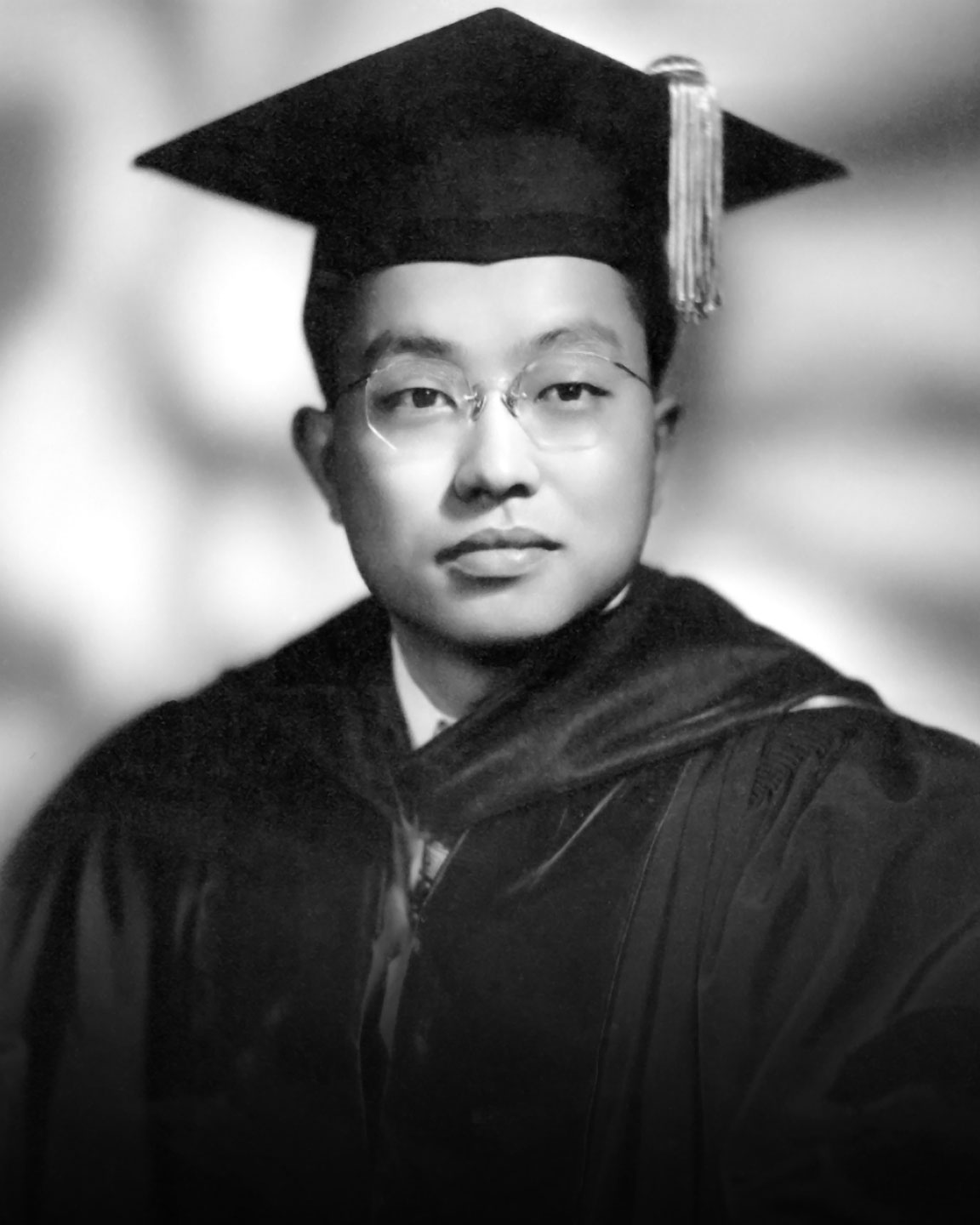
James M. Sugihara received the first PhD ever awarded by the University of Utah in 1947, working with
Professor Henry Eyring. He was a member of the faculty until 1964, when he accepted
a professorship at North Dakota State University, where he served as dean of the College
of Science and Mathematics. He was named Dean of the Graduate School and Director
of Research in 1974. In 1998, he was awarded an honorary doctorate at NDSU and retired
as Professor Emeritus.
2015
 Professor Joseph A. Gardella, Jr. received his Ph.D. in Analytical Chemistry at the University of Pittsburgh and completed
postdoctoral research in Physical Chemistry at the University of Utah working with
Ted Eyring in 1982. He then joined the faculty at University at Buffalo, State University
of New York, where he is now a Distinguished Professor and the John & Frances Larkin
Professor of Chemistry. Joe’s research interests are in quantitative analysis and
surface chemistry, broadly applied to the study of environmental effects at polymer
surfaces and tissue engineering with synthetic biomaterials. He is also director of
the Interdisciplinary Science and Engineering Partnership (ISEP), which brings together
the University of Buffalo, 21 public schools, the Buffalo Museum of Science, and Buffalo
State College to increase hands-on learning in science classes.
Professor Joseph A. Gardella, Jr. received his Ph.D. in Analytical Chemistry at the University of Pittsburgh and completed
postdoctoral research in Physical Chemistry at the University of Utah working with
Ted Eyring in 1982. He then joined the faculty at University at Buffalo, State University
of New York, where he is now a Distinguished Professor and the John & Frances Larkin
Professor of Chemistry. Joe’s research interests are in quantitative analysis and
surface chemistry, broadly applied to the study of environmental effects at polymer
surfaces and tissue engineering with synthetic biomaterials. He is also director of
the Interdisciplinary Science and Engineering Partnership (ISEP), which brings together
the University of Buffalo, 21 public schools, the Buffalo Museum of Science, and Buffalo
State College to increase hands-on learning in science classes.
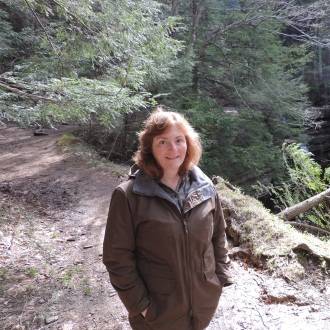 Diane B. Parry obtained her PhD in Physical and Analytical Chemistry at the University of Utah with
Professor Joel Harris in 1989, followed by postdoctoral research with Mike Philpott
at IBM's Almaden Research Center in San Jose, CA. She has worked at the Procter &
Gamble Company for 26 years, leading many disciplines within Research & Development
including supply chain innovation, process design, consumer understanding and formula
design. Diane is currently a Research & Development Associate Director; her Department
includes Chemists, Physicists and Engineers and stretches across six countries. Diane
is also the President of the Society for Applied Spectroscopy. She has been involved
in FACSS and SciX for more than ten years, including as the Governing Board Chair
in 2006, and started organizing sessions on “Analytical Chemists Easing World Poverty”
in 2010.
Diane B. Parry obtained her PhD in Physical and Analytical Chemistry at the University of Utah with
Professor Joel Harris in 1989, followed by postdoctoral research with Mike Philpott
at IBM's Almaden Research Center in San Jose, CA. She has worked at the Procter &
Gamble Company for 26 years, leading many disciplines within Research & Development
including supply chain innovation, process design, consumer understanding and formula
design. Diane is currently a Research & Development Associate Director; her Department
includes Chemists, Physicists and Engineers and stretches across six countries. Diane
is also the President of the Society for Applied Spectroscopy. She has been involved
in FACSS and SciX for more than ten years, including as the Governing Board Chair
in 2006, and started organizing sessions on “Analytical Chemists Easing World Poverty”
in 2010.
 Don L. Reese, MD received his B.S. in Chemistry from the University of Utah in 1973. He then attended
medical school at the University of Utah, earning his Doctor of Medicine degree in
1977. He completed a dermatology residency at the University of Minnesota in 1981.
In 1983, Don started his own private practice in dermatology, working in the field
until his recent retirement. Don and his wife Rebecca have been champions of undergraduate
teaching and research at the U. They have generously endowed a scholarship in science
teaching with the College of Science and a chemistry scholarship through the Ragsdale
Fund. Their contribution to the Thatcher Building established the Department’s advanced
undergraduate laboratories. Don and Rebecca are also founding members of the Curie
Club.
Don L. Reese, MD received his B.S. in Chemistry from the University of Utah in 1973. He then attended
medical school at the University of Utah, earning his Doctor of Medicine degree in
1977. He completed a dermatology residency at the University of Minnesota in 1981.
In 1983, Don started his own private practice in dermatology, working in the field
until his recent retirement. Don and his wife Rebecca have been champions of undergraduate
teaching and research at the U. They have generously endowed a scholarship in science
teaching with the College of Science and a chemistry scholarship through the Ragsdale
Fund. Their contribution to the Thatcher Building established the Department’s advanced
undergraduate laboratories. Don and Rebecca are also founding members of the Curie
Club.
 Kirk M. Ririe is a visionary scientist and inventor with several patents to his name. He currently
serves as CEO of BioFire Defense, which delivers a fully integrated suite of biological
agent identification products and life science systems to the biodefense and first
responder community. Among his inventions, he built the prototype to shorten the processing
time of a cutting-edge DNA analysis technique called PCR from hours to minutes. This
prototype, and assistance from his alma mater, the University of Utah, spurred his
founding of BioFire Diagnostics, Inc. and the invention of the LightCycler. His latest
invention, FilmArray System and Respiratory Panel, was approved by the FDA in 2011
to quickly test dozens of organisms simultaneously. Ririe is the recipient of numerous
awards, including Entrepreneur of the Year from Ernst & Young in 2004 and the Franklin
Jefferson Award in Science and Technology Innovation in 1999, and the Utah Technology
Council’s Hall of Fame in 2014.
Kirk M. Ririe is a visionary scientist and inventor with several patents to his name. He currently
serves as CEO of BioFire Defense, which delivers a fully integrated suite of biological
agent identification products and life science systems to the biodefense and first
responder community. Among his inventions, he built the prototype to shorten the processing
time of a cutting-edge DNA analysis technique called PCR from hours to minutes. This
prototype, and assistance from his alma mater, the University of Utah, spurred his
founding of BioFire Diagnostics, Inc. and the invention of the LightCycler. His latest
invention, FilmArray System and Respiratory Panel, was approved by the FDA in 2011
to quickly test dozens of organisms simultaneously. Ririe is the recipient of numerous
awards, including Entrepreneur of the Year from Ernst & Young in 2004 and the Franklin
Jefferson Award in Science and Technology Innovation in 1999, and the Utah Technology
Council’s Hall of Fame in 2014.
2014
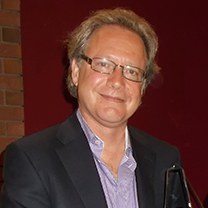 Professor David Clemmer received his PhD at the University of Utah in 1992. He spent a year in Japan as a
Japan Society for the Promotion of Science Fellow at the Himeji Institute of Technology,
and two years as a post-doctoral student at Northwestern University. He joined the
Chemistry faculty at Indiana University in 1995. His research involves the development
of methods for studying the structures of complex low-symmetry systems in the gas
phase.
Professor David Clemmer received his PhD at the University of Utah in 1992. He spent a year in Japan as a
Japan Society for the Promotion of Science Fellow at the Himeji Institute of Technology,
and two years as a post-doctoral student at Northwestern University. He joined the
Chemistry faculty at Indiana University in 1995. His research involves the development
of methods for studying the structures of complex low-symmetry systems in the gas
phase.
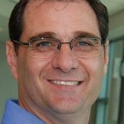 Jerry A. Murry obtained his PhD in synthetic organic chemistry at the University of Utah with Professor
Gary E. Keck in 1994 and completed an NIH post-doctoral fellowship with Professor
David A. Evans at Harvard University. He started his industrial career at Pfizer,
then worked as the Director of Process Development at Merck Research Laboratories.
He joined Amgen in 2006, where he is now Vice President of Small Molecule Process
and Product Development.
Jerry A. Murry obtained his PhD in synthetic organic chemistry at the University of Utah with Professor
Gary E. Keck in 1994 and completed an NIH post-doctoral fellowship with Professor
David A. Evans at Harvard University. He started his industrial career at Pfizer,
then worked as the Director of Process Development at Merck Research Laboratories.
He joined Amgen in 2006, where he is now Vice President of Small Molecule Process
and Product Development.
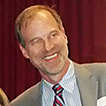 Thomas F. Thatcher received his BA in Chemistry from the University of Utah in 1985, along with an emphasis
in Japanese. He served as a missionary for the LDS Church in Fukuoka, Japan from 1980
to 1982. In 1987, he obtained his MBA from Brigham Young University. He worked for
27 years at the Thatcher Company, and was General Manager of Thatcher Pharmaceutical
from 1999-2012. Currently, Tom is the founder and CEO of Intuitive Funding, a company
focused on helping startups succeed.
Thomas F. Thatcher received his BA in Chemistry from the University of Utah in 1985, along with an emphasis
in Japanese. He served as a missionary for the LDS Church in Fukuoka, Japan from 1980
to 1982. In 1987, he obtained his MBA from Brigham Young University. He worked for
27 years at the Thatcher Company, and was General Manager of Thatcher Pharmaceutical
from 1999-2012. Currently, Tom is the founder and CEO of Intuitive Funding, a company
focused on helping startups succeed.
2013
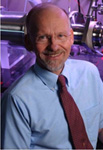
Dr. Richard Smith completed his doctorate degree under Jean Futrell in 1975. He is the Battelle Fellow
and Chief Scientist within the Biological Sciences Division of the Pacific Northwest
National Laboratory. His research interests span development of advanced analytical
methods and instrumentation, with particular emphasis on high-resolution separations
and mass spectrometry, and their applications in biological and biomedical research.
Dick also is Director of Proteome Research at PNNL, Director of the NIH Research Resource
for Integrative Proteomics, an adjunct faculty member in the chemistry departments
at Washington State and Utah State universities, and an affiliate faculty member at
the University of Idaho. He is the author/co-author of more than 800 peer-reviewed
journal articles and recipient of 43 patents.

Dr. George Uhlig earned his doctorate degree in 1972 under Henry Eyring while a career U.S. Air Force
officer. George worked on his doctoral research and simultaneously handled projects
of greater interest to the Air Force. After retiring from the Air Force in 1983 with
the rank of Lieutenant Colonel, George was the head of Research and Development for
Hercules Aerospace at the Bacchus Works in Magna, Utah. He then taught college chemistry
courses first at Salt Lake Community College and then the College of Eastern Utah
in Price. At CEU, he founded the only science research program at the college and
inspired many students to pursue advanced education in the sciences and engineering.
George retired from CEU in 2008.

Dr. Robert Webb was the second doctoral graduate of Gary Keck’s lab. He defended his thesis in 1982.
Following an NIH-sponsored postdoctoral fellowship in the laboratory of Sam Danishefsky
at Yale University, Rob took a position in the pharmaceutical industry with Bristol-Myers
Squibb working on drugs for the treatment of HIV infection and cancer. Rob then moved
to Arena Pharmaceuticals in San Diego where he helped guide key programs into development,
most notably APD356 that has received FDA approval for the treatment of obesity and
will be marketed as Lorcaserin. He is currently Vice President at Amplyx Pharmaceuticals.
Rob and his wife divide their time between San Diego and Park City.
2012

Dr. Marilyn Alder Marquis received her undergraduate degree Chemistry from the University of Utah, and went
to Berkeley for a month for graduate school, and then returned to Utah to study with
Henry Eyring. Marilyn worked on dynamic mechanical testing of polyamides and the relationship
between their rheological response and their chemical structure. While a graduate
student, she produced a set of lecture notes from Henry Eyring’s classes which became
the start of a textbook Statistical Mechanics and Dynamics co-authored by Henry Eyring,
Doug Henderson, Betsy Stover, and Ted Eyring. Marilyn’s notes were mimeographed and
bound with a yellow cover and were referred to by students as the yellow peril. Dr.
Marquis was the first woman to earn a Ph.D. in Chemistry at the University of Utah.
Dr. Marquis also earned an M.B.A. Degree, Finance and Management, at Golden Gate University
in San Francisco. Dr. Marquis worked for several large corporations and government
labs including Utah’s Dugway Proving Ground. Her research contributions are broad,
and these include Arc Plasma Processing of Chemicals, Synthesis of Tetrafluoroethylene,
Synthesis of Polymer Intermediates from Low BTU Methane; Kinetics and Mechanism of
Ozone reactions, and Solvent Effects in Molecular Decomposition Reactions. She has
also worked on project management in the private sector and for the US Department
of Energy in Magnetically-Confined Fusion, Radioactive Waste Management, and Geothermal-Based
Electric Power Generation. Dr. Marquis was married to the late David M. Marquis, who
was a Ph.D. graduate in organic chemistry from Harvard who she met at Dugway; they
have two sons and four grandchildren.

Dr. Bill McKenna earned a Ph.D. in Chemistry at the University of Utah. Bill joined the technical
staff at Eastman Kodak as a Senior Scientist working in the area of vibrational spectroscopy
and high-resolution electron energy loss spectroscopy. At Kodak, he was promoted to
Senior Research Associate. He received several other promotions, his last being the
Program Manager for the Flexible Display program. When Dow Chemical acquired Kodak’s
flexible display program, Bill became Director of Research for Optical Display Films
Display Technologies at Dow. In 2010, Bill retired from Dow and co-founded The Avout
Group which provides consulting in the areas of technology scouting and development
in the area of materials and materials applications.
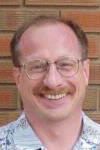
Dr. Norm Dovichi was the first doctoral graduate of Joel Harris’ lab. At the University of Wyoming
Dr. Dovichi and faculty launched a research program in high sensitivity, small-volume
detection methods for liquid chromatography. In 1986, Norm moved to the University
of Alberta where he developed the multi-capillary detection for sequencing DNA. In
2001, Norm was appointed to an endowed chair at the University of Washington. A decade
later he moved to Notre Dame, where he is currently the Grace Rupley Professor of
Chemistry and Biochemistry. 65 students have earned graduate degrees in his lab, and
he has worked with 30 postdoctoral fellows and an equivalent number of undergraduates.
Norm is presently an Associate Editor of Analytical Chemistry.
2011

Dr. Steven Kuznicki received his Ph.D. in Chemistry from the University of Utah. After a 20+ year career
in industry, Dr. Kuznicki initiated a career in academia. Dr. Kuznicki is widely regarded
as the world’s leading authority on mixed coordination molecular sieves. In recent
years hundreds of authors from over 60 institutions in at least 20 countries have
published patents or scholarly articles on these new materials. This area represents
a fundamental scientific contribution of Dr. Kuznicki to microporous solids and nanotechnology.

Dr. Marvin Vestal received his Ph.D. in Chemistry from the University of Utah. He is an accomplished
and well known thought leader in the international field of mass spectrometry. He
has published well over 100 articles in peer reviewed journals and has been awarded
over 50 patents, with additional ones pending. In 2010, he was recognized with a rare
"Distinguished Contribution to Mass Spectrometry" award by the American Society for
Mass Spectrometry (ASMS). Dr. Vestal is widely known as the inventor of Thermospray
HPLC-MS, which was the most common LC-MS interface before the advent and commercialization
of electrospray ionization.
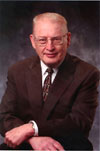
Dr. Arthur Ruoff received his Ph.D (Physical Chemistry with a Minor in Physics) under the tutelage
of Henry Eyring (U. Utah. Ruoff became an Assistant Professor at Cornell at the age
of 24. He is the author of two textbooks, a book on energy, and an audiotutorial course
on Introductory Materials Science that has been used in 60 universities world‐wide.
He mentored 43 Ph.D. students and 19 postdoctoral associates. He has published 322
reviewed papers. Dr. Ruoff received the Bridgman Medal for High Pressure Research.
He was honored as an outstanding alumnus by the University of Utah and by Purdue University.

















 Rik R. Tykwinski earned his PhD from the University of Utah with Peter Stang in 1994. He worked with
Professor François Diederich as a PDF at ETH-Zürich and then joined the faculty at
the University of Alberta in 1997. In 2009 he accepted a position as Chair of Organic
Chemistry at the University of Erlangen-Nürnberg in Germany. In 2016 he became Chair
of the Department of Chemistry at the University of Alberta.
Rik R. Tykwinski earned his PhD from the University of Utah with Peter Stang in 1994. He worked with
Professor François Diederich as a PDF at ETH-Zürich and then joined the faculty at
the University of Alberta in 1997. In 2009 he accepted a position as Chair of Organic
Chemistry at the University of Erlangen-Nürnberg in Germany. In 2016 he became Chair
of the Department of Chemistry at the University of Alberta.  Carrie Wager is Vice President Strategic and Scientific Operations at Ascidian Therapeutics. She
received her Bachelor's in Chemistry in 1994 from Miami University, her PhD in Chemistry
from the University of Utah in 2000 and an MBA from the MIT Sloan School of Management
in 2017. Carrie spent 17 years at Pfizer as Senior Principal Scientist, Director
of Business Planning, Chief of Staff for Pfizer Medical, and Medical Strategy Lead
in Oncology. She then joined the Broad Institute of MIT and Harvard as Senior Advisor,
before assuming her present position at Ascidian Therapeutics.
Carrie Wager is Vice President Strategic and Scientific Operations at Ascidian Therapeutics. She
received her Bachelor's in Chemistry in 1994 from Miami University, her PhD in Chemistry
from the University of Utah in 2000 and an MBA from the MIT Sloan School of Management
in 2017. Carrie spent 17 years at Pfizer as Senior Principal Scientist, Director
of Business Planning, Chief of Staff for Pfizer Medical, and Medical Strategy Lead
in Oncology. She then joined the Broad Institute of MIT and Harvard as Senior Advisor,
before assuming her present position at Ascidian Therapeutics. Raymond Price received his B.S. in Chemistry from the University of Utah, followed by an M.D. from
Harvard. He has spent his career expanding the role of surgery in public health, and
has participated in or led surgical expeditions to Asia, Latin America, and Africa.
He co-founded The Center for Global Surgery at the University of Utah. He also currently
directs graduate surgical education at Intermountain Medical Center.
Raymond Price received his B.S. in Chemistry from the University of Utah, followed by an M.D. from
Harvard. He has spent his career expanding the role of surgery in public health, and
has participated in or led surgical expeditions to Asia, Latin America, and Africa.
He co-founded The Center for Global Surgery at the University of Utah. He also currently
directs graduate surgical education at Intermountain Medical Center.  Kurt Zilm completed his PhD in Chemistry at the University of Utah in 1981. Now Chair of the
Department of Chemistry at Yale, Zilm's research involves development of new NMR methods
and their application to important problems in chemistry and materials science. Recent
interests include the use of site specific sold state NMR relaxation measurements
to characterize protein backbone motions and to measure difficult to access long range
distance constraints. They are also studying the dynamics of water in proteins and
other materials where nanoscopic confinement effects depress the freezing point by
over 60 K.
Kurt Zilm completed his PhD in Chemistry at the University of Utah in 1981. Now Chair of the
Department of Chemistry at Yale, Zilm's research involves development of new NMR methods
and their application to important problems in chemistry and materials science. Recent
interests include the use of site specific sold state NMR relaxation measurements
to characterize protein backbone motions and to measure difficult to access long range
distance constraints. They are also studying the dynamics of water in proteins and
other materials where nanoscopic confinement effects depress the freezing point by
over 60 K. Michelle Williams received her PhD from the University of Utah and began her career with Rohm and Haas
Company as a Research Scientist in 1987. During her career with Rohm and Haas Company
and Dow Chemical, Michelle also held manufacturing, sales, marketing, strategy, and
general management positions. She was General Manager with CMP Technologies, and
later General Manager with Adhesives and Sealants. Michelle joined Arkema in 2011,
and was named Global Group President of Arkema's Hydrogen Peroxide business unit.
Michelle joined the Brady Corporation's Board of Directors, a global leader in safety
and identification solutions.
Michelle Williams received her PhD from the University of Utah and began her career with Rohm and Haas
Company as a Research Scientist in 1987. During her career with Rohm and Haas Company
and Dow Chemical, Michelle also held manufacturing, sales, marketing, strategy, and
general management positions. She was General Manager with CMP Technologies, and
later General Manager with Adhesives and Sealants. Michelle joined Arkema in 2011,
and was named Global Group President of Arkema's Hydrogen Peroxide business unit.
Michelle joined the Brady Corporation's Board of Directors, a global leader in safety
and identification solutions.
 Joseph Madsen received his undergraduate degree from the University of Utah in 1976, from which
he went on to earn an MD from Harvard Medical School in 1981. Between the years 1981
and 1983, he completed an internship followed by a research fellowship with Beth Israel
Deaconess Medical Center in Boston, then completed his residency in 1989 with Massachusetts
General Hospital. He has certifications with the American Board of Neurological Surgery
and the American Board of Psychiatry and Neurology in Child Neurology. He has developed
new techniques for monitoring shunt flow in patients with hydrocephalus, as well as
predicting seizures using intracranial data gathered from implanted electrodes. Aside
from practicing pediatric neurosurgery at Boston Children’s Hospital, Madsen is an
adjunct professor in functional neurosurgery at Xanwu Hospital, associated with Capitol
Medical University, Beijing Institute of Functional Neurosurgery. He hopes to improve
pediatric neurosurgery and epilepsy surgery abroad, especially in China, and has been
working on a mechanism to review surgical cases in real time with colleagues at Beijing’s
Children’s Hospital.
Joseph Madsen received his undergraduate degree from the University of Utah in 1976, from which
he went on to earn an MD from Harvard Medical School in 1981. Between the years 1981
and 1983, he completed an internship followed by a research fellowship with Beth Israel
Deaconess Medical Center in Boston, then completed his residency in 1989 with Massachusetts
General Hospital. He has certifications with the American Board of Neurological Surgery
and the American Board of Psychiatry and Neurology in Child Neurology. He has developed
new techniques for monitoring shunt flow in patients with hydrocephalus, as well as
predicting seizures using intracranial data gathered from implanted electrodes. Aside
from practicing pediatric neurosurgery at Boston Children’s Hospital, Madsen is an
adjunct professor in functional neurosurgery at Xanwu Hospital, associated with Capitol
Medical University, Beijing Institute of Functional Neurosurgery. He hopes to improve
pediatric neurosurgery and epilepsy surgery abroad, especially in China, and has been
working on a mechanism to review surgical cases in real time with colleagues at Beijing’s
Children’s Hospital. Jeanne McHale earned a BS in Chemistry from Wright State University in 1975, Jeanne McHale attended
the University of Utah for her PhD, which she received in 1979 with Jack Simons, followed
by postdoctoral research with Jim Wang. Jeanne was a member of the chemistry faculty
at the University of Idaho from 1980 until 2004, which is when she joined the chemistry
faculty at Washington State University, where she is currently a Professor Emerita.
She is a fellow in the American Association for the Advancement of Science and author
of Molecular Spectroscopy (Prentice-Hall, 1999). She also edited the recently published
Handbook of Luminescent Semiconductor Materials (Taylor & Francis, 2011) with co-editor
Leah Bergman. The McHale lab specializes in the use of resonance Raman and photoluminescence
spectroscopy for study of molecules and nanomaterials with interesting optical and
electronic properties. Fundamental quantum mechanical aspects of electron transfer
in solution and in interfacial systems are a major focus of their experiments. McHale’s
group pioneered the use of resonance Raman spectroscopy to study solvent dynamics
in electron-transfer reactions. (Photo courtesy of
Jeanne McHale earned a BS in Chemistry from Wright State University in 1975, Jeanne McHale attended
the University of Utah for her PhD, which she received in 1979 with Jack Simons, followed
by postdoctoral research with Jim Wang. Jeanne was a member of the chemistry faculty
at the University of Idaho from 1980 until 2004, which is when she joined the chemistry
faculty at Washington State University, where she is currently a Professor Emerita.
She is a fellow in the American Association for the Advancement of Science and author
of Molecular Spectroscopy (Prentice-Hall, 1999). She also edited the recently published
Handbook of Luminescent Semiconductor Materials (Taylor & Francis, 2011) with co-editor
Leah Bergman. The McHale lab specializes in the use of resonance Raman and photoluminescence
spectroscopy for study of molecules and nanomaterials with interesting optical and
electronic properties. Fundamental quantum mechanical aspects of electron transfer
in solution and in interfacial systems are a major focus of their experiments. McHale’s
group pioneered the use of resonance Raman spectroscopy to study solvent dynamics
in electron-transfer reactions. (Photo courtesy of  Craig Thatcher earned a BA in Chemistry from the University of Utah in 1974, a natural course for
him since his grandfather was a chemistry teacher and founder of Wasatch Chemical
Company, and his father a chemical engineer and founder of Thatcher Chemical Company.
After receiving his undergraduate degree, Thatcher attended graduate school at Northwestern
University in Evanston, Illinois where he earned an MBA in Marketing in 1976. He and
his wife Connie spent their first year of marriage in Centerville, Utah where he began
his full-time career at Thatcher Chemical Company, a company for which he still dedicates
his time and energy as president. The Thatcher Chemical Company has grown from humble
beginnings with two employees and no facilities, to a company of over 500 employees
in 11 U.S. locations with customers throughout the world. The company is currently
debt-free and has experienced rapid growth in recent years. Craig Thatcher is always
looking to improve himself and assist in helping others, and is actively involved
in community service and charity work, as well as endeavors to build the Thatcher
Chemical Company in an effort to achieve these goals.
Craig Thatcher earned a BA in Chemistry from the University of Utah in 1974, a natural course for
him since his grandfather was a chemistry teacher and founder of Wasatch Chemical
Company, and his father a chemical engineer and founder of Thatcher Chemical Company.
After receiving his undergraduate degree, Thatcher attended graduate school at Northwestern
University in Evanston, Illinois where he earned an MBA in Marketing in 1976. He and
his wife Connie spent their first year of marriage in Centerville, Utah where he began
his full-time career at Thatcher Chemical Company, a company for which he still dedicates
his time and energy as president. The Thatcher Chemical Company has grown from humble
beginnings with two employees and no facilities, to a company of over 500 employees
in 11 U.S. locations with customers throughout the world. The company is currently
debt-free and has experienced rapid growth in recent years. Craig Thatcher is always
looking to improve himself and assist in helping others, and is actively involved
in community service and charity work, as well as endeavors to build the Thatcher
Chemical Company in an effort to achieve these goals. Carlos M. Bowman received his PhD in Organic Chemistry from the University of Utah in 1957. While working
in rocket fuel research early on in his career at the Dow Chemical Company, Bowman
implemented the innovative use of computers in using thermodynamics to predict substance
thrust capabilities for use in rocket propellants. In 1967 he became the Dow Chemical
Company’s Research Director, where he continued to advance the field of cheminformatics
until 1980.
Carlos M. Bowman received his PhD in Organic Chemistry from the University of Utah in 1957. While working
in rocket fuel research early on in his career at the Dow Chemical Company, Bowman
implemented the innovative use of computers in using thermodynamics to predict substance
thrust capabilities for use in rocket propellants. In 1967 he became the Dow Chemical
Company’s Research Director, where he continued to advance the field of cheminformatics
until 1980.
 Bryant W. Rossiter earned his PhD from the University of Utah in 1957 and currently works as a consultant,
author, and as the senior editor of Physical Methods of Chemistry. From 1957-1985
he was the Director of the Chemistry Division at Eastman Kodak Co., and from 1985-1989
served as President of Viratek Pharmaceuticals, Inc. His ventures resulted in several
successful attempts at developing broad-spectrum antiviral drugs, some of these treatments
experiencing worldwide implementation.
Bryant W. Rossiter earned his PhD from the University of Utah in 1957 and currently works as a consultant,
author, and as the senior editor of Physical Methods of Chemistry. From 1957-1985
he was the Director of the Chemistry Division at Eastman Kodak Co., and from 1985-1989
served as President of Viratek Pharmaceuticals, Inc. His ventures resulted in several
successful attempts at developing broad-spectrum antiviral drugs, some of these treatments
experiencing worldwide implementation. Clifton G. Sanders received his PhD from the University of Utah in 1990 and went on to hold many positions
in both research and education, including Research Scientist for CardioPulmonics,
Dean for the School of Science, Mathematics and Engineering for Salt Lake Community
College, and Adjunct Instructor for the Salt Lake Theological Seminary. He is currently
the Chief Technology Consultant and Co-Owner of Better Options Consulting International,
and is the Provost for Academic Affairs at Salt Lake Community College.
Clifton G. Sanders received his PhD from the University of Utah in 1990 and went on to hold many positions
in both research and education, including Research Scientist for CardioPulmonics,
Dean for the School of Science, Mathematics and Engineering for Salt Lake Community
College, and Adjunct Instructor for the Salt Lake Theological Seminary. He is currently
the Chief Technology Consultant and Co-Owner of Better Options Consulting International,
and is the Provost for Academic Affairs at Salt Lake Community College.
 Sung Wan Kim received his PhD in Physical Chemistry with Professor Henry Eyring in 1969. He is
currently a Distinguished Professor of Pharmaceutics and Pharmaceutical Chemistry
and a Distinguished Professor of Bioengineering at the U. He was Director of the Center
for Controlled Chemical Delivery from 1985-2006. Dr. Kim is a pioneer in drug delivery
research focused on hydrogels, biodegradable drug conjugates, self-regulating drug
delivery and stimuli sensitive polymers.
Sung Wan Kim received his PhD in Physical Chemistry with Professor Henry Eyring in 1969. He is
currently a Distinguished Professor of Pharmaceutics and Pharmaceutical Chemistry
and a Distinguished Professor of Bioengineering at the U. He was Director of the Center
for Controlled Chemical Delivery from 1985-2006. Dr. Kim is a pioneer in drug delivery
research focused on hydrogels, biodegradable drug conjugates, self-regulating drug
delivery and stimuli sensitive polymers. Jaqueline L. Kiplinger obtained her PhD in Organometallic Fluorocarbon Chemistry at the University of Utah
with Professor Tom Richmond in 1996. She is now a Fellow at Los Alamos National Laboratory,
where she has worked since starting as a postdoctoral fellow in 1999. She is recognized
as a pioneer in uranium and thorium chemistry, and has received numerous awards for
her research, service, and mentorship.
Jaqueline L. Kiplinger obtained her PhD in Organometallic Fluorocarbon Chemistry at the University of Utah
with Professor Tom Richmond in 1996. She is now a Fellow at Los Alamos National Laboratory,
where she has worked since starting as a postdoctoral fellow in 1999. She is recognized
as a pioneer in uranium and thorium chemistry, and has received numerous awards for
her research, service, and mentorship. Milton L. Lee received his B.A. in Chemistry from the University of Utah in 1971. He attended graduate
school at Indiana University, earning his PhD with Professor Milos Novotny in 1975.
In 1976, he joined the faculty at BYU, where he is now the H. Tracy Hall Professor
of Chemistry. He specializes in microseparation techniques, column technology for
microseparations, and instrumentation for capillary separations and high performance
separations-mass spectrometry.
Milton L. Lee received his B.A. in Chemistry from the University of Utah in 1971. He attended graduate
school at Indiana University, earning his PhD with Professor Milos Novotny in 1975.
In 1976, he joined the faculty at BYU, where he is now the H. Tracy Hall Professor
of Chemistry. He specializes in microseparation techniques, column technology for
microseparations, and instrumentation for capillary separations and high performance
separations-mass spectrometry.
 Professor Joseph A. Gardella, Jr. received his Ph.D. in Analytical Chemistry at the University of Pittsburgh and completed
postdoctoral research in Physical Chemistry at the University of Utah working with
Ted Eyring in 1982. He then joined the faculty at University at Buffalo, State University
of New York, where he is now a Distinguished Professor and the John & Frances Larkin
Professor of Chemistry. Joe’s research interests are in quantitative analysis and
surface chemistry, broadly applied to the study of environmental effects at polymer
surfaces and tissue engineering with synthetic biomaterials. He is also director of
the Interdisciplinary Science and Engineering Partnership (ISEP), which brings together
the University of Buffalo, 21 public schools, the Buffalo Museum of Science, and Buffalo
State College to increase hands-on learning in science classes.
Professor Joseph A. Gardella, Jr. received his Ph.D. in Analytical Chemistry at the University of Pittsburgh and completed
postdoctoral research in Physical Chemistry at the University of Utah working with
Ted Eyring in 1982. He then joined the faculty at University at Buffalo, State University
of New York, where he is now a Distinguished Professor and the John & Frances Larkin
Professor of Chemistry. Joe’s research interests are in quantitative analysis and
surface chemistry, broadly applied to the study of environmental effects at polymer
surfaces and tissue engineering with synthetic biomaterials. He is also director of
the Interdisciplinary Science and Engineering Partnership (ISEP), which brings together
the University of Buffalo, 21 public schools, the Buffalo Museum of Science, and Buffalo
State College to increase hands-on learning in science classes. Diane B. Parry obtained her PhD in Physical and Analytical Chemistry at the University of Utah with
Professor Joel Harris in 1989, followed by postdoctoral research with Mike Philpott
at IBM's Almaden Research Center in San Jose, CA. She has worked at the Procter &
Gamble Company for 26 years, leading many disciplines within Research & Development
including supply chain innovation, process design, consumer understanding and formula
design. Diane is currently a Research & Development Associate Director; her Department
includes Chemists, Physicists and Engineers and stretches across six countries. Diane
is also the President of the Society for Applied Spectroscopy. She has been involved
in FACSS and SciX for more than ten years, including as the Governing Board Chair
in 2006, and started organizing sessions on “Analytical Chemists Easing World Poverty”
in 2010.
Diane B. Parry obtained her PhD in Physical and Analytical Chemistry at the University of Utah with
Professor Joel Harris in 1989, followed by postdoctoral research with Mike Philpott
at IBM's Almaden Research Center in San Jose, CA. She has worked at the Procter &
Gamble Company for 26 years, leading many disciplines within Research & Development
including supply chain innovation, process design, consumer understanding and formula
design. Diane is currently a Research & Development Associate Director; her Department
includes Chemists, Physicists and Engineers and stretches across six countries. Diane
is also the President of the Society for Applied Spectroscopy. She has been involved
in FACSS and SciX for more than ten years, including as the Governing Board Chair
in 2006, and started organizing sessions on “Analytical Chemists Easing World Poverty”
in 2010. Don L. Reese, MD received his B.S. in Chemistry from the University of Utah in 1973. He then attended
medical school at the University of Utah, earning his Doctor of Medicine degree in
1977. He completed a dermatology residency at the University of Minnesota in 1981.
In 1983, Don started his own private practice in dermatology, working in the field
until his recent retirement. Don and his wife Rebecca have been champions of undergraduate
teaching and research at the U. They have generously endowed a scholarship in science
teaching with the College of Science and a chemistry scholarship through the Ragsdale
Fund. Their contribution to the Thatcher Building established the Department’s advanced
undergraduate laboratories. Don and Rebecca are also founding members of the Curie
Club.
Don L. Reese, MD received his B.S. in Chemistry from the University of Utah in 1973. He then attended
medical school at the University of Utah, earning his Doctor of Medicine degree in
1977. He completed a dermatology residency at the University of Minnesota in 1981.
In 1983, Don started his own private practice in dermatology, working in the field
until his recent retirement. Don and his wife Rebecca have been champions of undergraduate
teaching and research at the U. They have generously endowed a scholarship in science
teaching with the College of Science and a chemistry scholarship through the Ragsdale
Fund. Their contribution to the Thatcher Building established the Department’s advanced
undergraduate laboratories. Don and Rebecca are also founding members of the Curie
Club. Kirk M. Ririe is a visionary scientist and inventor with several patents to his name. He currently
serves as CEO of BioFire Defense, which delivers a fully integrated suite of biological
agent identification products and life science systems to the biodefense and first
responder community. Among his inventions, he built the prototype to shorten the processing
time of a cutting-edge DNA analysis technique called PCR from hours to minutes. This
prototype, and assistance from his alma mater, the University of Utah, spurred his
founding of BioFire Diagnostics, Inc. and the invention of the LightCycler. His latest
invention, FilmArray System and Respiratory Panel, was approved by the FDA in 2011
to quickly test dozens of organisms simultaneously. Ririe is the recipient of numerous
awards, including Entrepreneur of the Year from Ernst & Young in 2004 and the Franklin
Jefferson Award in Science and Technology Innovation in 1999, and the Utah Technology
Council’s Hall of Fame in 2014.
Kirk M. Ririe is a visionary scientist and inventor with several patents to his name. He currently
serves as CEO of BioFire Defense, which delivers a fully integrated suite of biological
agent identification products and life science systems to the biodefense and first
responder community. Among his inventions, he built the prototype to shorten the processing
time of a cutting-edge DNA analysis technique called PCR from hours to minutes. This
prototype, and assistance from his alma mater, the University of Utah, spurred his
founding of BioFire Diagnostics, Inc. and the invention of the LightCycler. His latest
invention, FilmArray System and Respiratory Panel, was approved by the FDA in 2011
to quickly test dozens of organisms simultaneously. Ririe is the recipient of numerous
awards, including Entrepreneur of the Year from Ernst & Young in 2004 and the Franklin
Jefferson Award in Science and Technology Innovation in 1999, and the Utah Technology
Council’s Hall of Fame in 2014. Professor David Clemmer received his PhD at the University of Utah in 1992. He spent a year in Japan as a
Japan Society for the Promotion of Science Fellow at the Himeji Institute of Technology,
and two years as a post-doctoral student at Northwestern University. He joined the
Chemistry faculty at Indiana University in 1995. His research involves the development
of methods for studying the structures of complex low-symmetry systems in the gas
phase.
Professor David Clemmer received his PhD at the University of Utah in 1992. He spent a year in Japan as a
Japan Society for the Promotion of Science Fellow at the Himeji Institute of Technology,
and two years as a post-doctoral student at Northwestern University. He joined the
Chemistry faculty at Indiana University in 1995. His research involves the development
of methods for studying the structures of complex low-symmetry systems in the gas
phase. Jerry A. Murry obtained his PhD in synthetic organic chemistry at the University of Utah with Professor
Gary E. Keck in 1994 and completed an NIH post-doctoral fellowship with Professor
David A. Evans at Harvard University. He started his industrial career at Pfizer,
then worked as the Director of Process Development at Merck Research Laboratories.
He joined Amgen in 2006, where he is now Vice President of Small Molecule Process
and Product Development.
Jerry A. Murry obtained his PhD in synthetic organic chemistry at the University of Utah with Professor
Gary E. Keck in 1994 and completed an NIH post-doctoral fellowship with Professor
David A. Evans at Harvard University. He started his industrial career at Pfizer,
then worked as the Director of Process Development at Merck Research Laboratories.
He joined Amgen in 2006, where he is now Vice President of Small Molecule Process
and Product Development. Thomas F. Thatcher received his BA in Chemistry from the University of Utah in 1985, along with an emphasis
in Japanese. He served as a missionary for the LDS Church in Fukuoka, Japan from 1980
to 1982. In 1987, he obtained his MBA from Brigham Young University. He worked for
27 years at the Thatcher Company, and was General Manager of Thatcher Pharmaceutical
from 1999-2012. Currently, Tom is the founder and CEO of Intuitive Funding, a company
focused on helping startups succeed.
Thomas F. Thatcher received his BA in Chemistry from the University of Utah in 1985, along with an emphasis
in Japanese. He served as a missionary for the LDS Church in Fukuoka, Japan from 1980
to 1982. In 1987, he obtained his MBA from Brigham Young University. He worked for
27 years at the Thatcher Company, and was General Manager of Thatcher Pharmaceutical
from 1999-2012. Currently, Tom is the founder and CEO of Intuitive Funding, a company
focused on helping startups succeed.